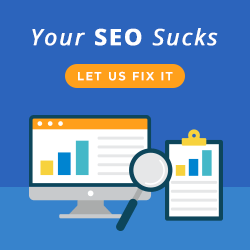Did you enjoy this video? Need more tips on contextual advertising and online marketing? Click here to get started.
Video Transcript: Here are a couple of tips on contextual advertising because the old way of figuring out those themes was incredibly long winded and you needed to spend about two days playing with the Google keyword tool. Google have a tool for contextual advertising. It’s still in beta but you’ll find it when you log into your AdWords account.
Under tools and analysis at the top, you’ll find the contextual targeting tool. I haven’t got a lot of screen shots for you because again, I don’t think many of you ought to be digging into this much detail in AdWords, but I’m just letting you know it’s there. If you’re the more technical type, we’ll have a video on our website very soon on how to use this. You basically plug in a bunch of words into Google.
You say, throw these ten phrases into the contextual targeting tool and it spits back eighty ad groups for you with that little five word recipe for every ad group in about three and a half seconds. It’s gold. If eighty ad groups aren’t enough for you, you throw another ten words in and you go again and it spits out another eighty and you go again and you go again. Now you’ve got 320 ad groups built in about half a minute. It’s brilliant.
Question: In terms of building eighty ad groups all around a similar theme, would there be any competitive bidding against each other? Would some of them be treading on each other’s toes and arguably competing in the bidding?
Mike: So if you’re bidding on lots of ad groups and there is some crossover between them, are you competing against each other? Not really, no, because Google is only ever going to show one of your ads at a time. All you’re doing by having lots of ad groups and there will be some crossover and that’s fine, Google is going to interpret those themes differently.
There is going to be some crossover, but because it is only showing one ad at a time, it’s just giving you far more reach. I always see Display campaigns with one or two ad groups. You’re really not giving your best chance of success by just saying to Google, oh, just look for these themes please. What you want to say is, look for all of these.
Go put my ad on a whole stack of places and then I’ll manage that based on the results I get and say, that’s not good, that’s no good, cut that out and chop it down and chop it down. I want a big playing field to play on and then get rid of all the rubbish. If I only give it a couple of themes, I’m really not getting much data. There is no harm in having lots of ad groups.
One of the guys I’ve been talking to recently in the States has made about $7,000,000 in the last two or three years doing affiliate marketing. He’ll build a campaign with 5,000 – 10,000 ad groups and then manage it very aggressively using a whole stack of tools. He’s made it work. It’s difficult to do but there are tools that help you. That’s a great way to build the initial account.
The other one, we used to have this thing called the Wonder Wheel. The old timers will remember, on Google. They took that away about three years ago. But if you search to the bottom of a Google search pages result, you can still get the related terms. That’s really good fodder, both for thinking of new themes, so each theme becomes an ad group. So there is another potential eight ad groups for you and eight new themes.
You could use those to brainstorm some recipes, but you don’t have to build the recipes by hand, use the contextual tool for that. That’s going to give you some ways to start to think about some of those related themes. The other way to think about this is what Perry calls Right Angle Marketing. If I’m selling wine, I would never, on Search, bid on cheese. If someone is searching for cheese, they’re looking to buy cheese.
I’m there with my wine ad saying, buy my wine. My Quality Score is horrible, it’s just not going to work. But on Display I sell wine, showing ads on cheese websites, might be a really good place. That might be where some of my prospects hang out, particularly if I can tie the two together. So if I give Google a list of cheese themes and say, find pages on the GDN that match these themes and show my wine and cheese ad over there, that might be a really good place to show your ads.
Maybe you sell a product aimed at parents of young kids. You might come up with themes like kindergarten, Duplo, Lego, all those things where someone looking at those sites may well be a parent of a young child. Mother’s group, maternal health nurse anything you can think of and brainstorm that probably means a page around that sort of content is being visited by the person who you want to reach. That’s how contextual advertising works.
In a nutshell, this advertising type targets all your potential buyers. Thus, it is important to learn and apply it. If you need help in doing so, stop by this page for an expert’s guidance.


